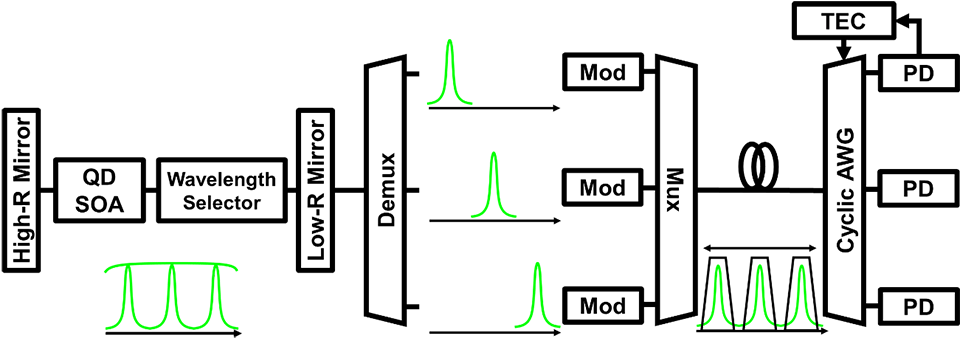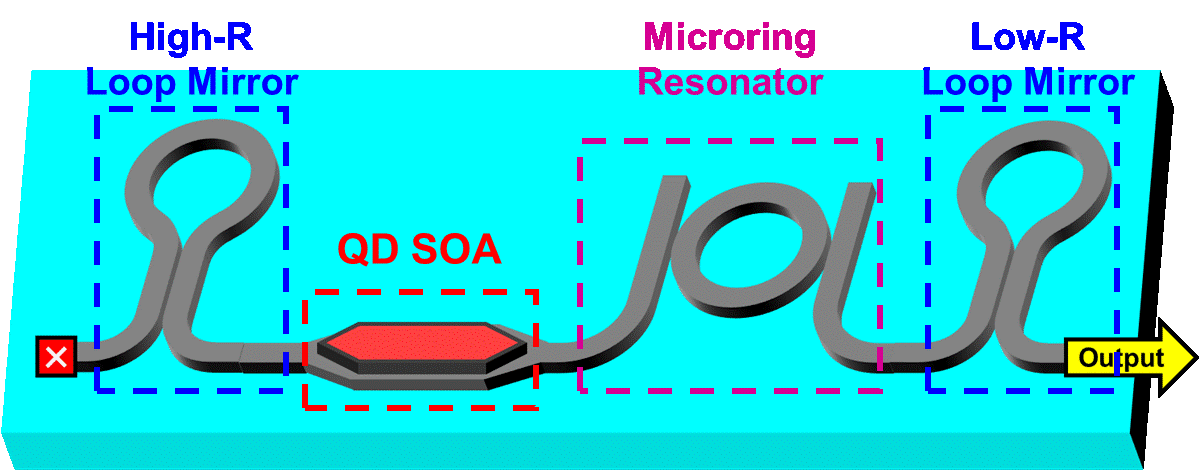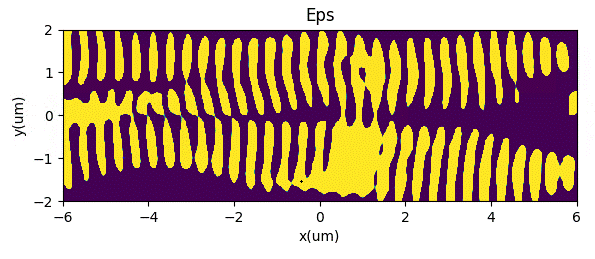
With the continued growth of Internet traffic in recent years, wavelength division multiplexing (WDM) technology, which multiplexes multiple independent wavelengths into a single fiber, has been used to increase data transmission capacity. However, current WDM systems have some limitations, such as the wavelength drift of semiconductor lasers with respect to temperature and the negative effect on dispersion when the number of wavelengths is increased. To overcome these problems, we have proposed a new wavelength grid-free WDM system that enables the use of uncooled lasers with wavelength drift and a narrow and constant wavelength period.

In order to realize a new WDM system, research has been conducted on a multi-wavelength laser using a low index silicon nitride (SiN) material with lower propagation loss and better wavelength controllability compared to Si. The 1.3 µm band multi-wavelength hybrid laser that constitutes an external ring resonator, a loop mirror, and a QD-SOA (Quantum Dot-Semiconductor Optical Amplifier) as the light source are hybrid-integrated.

To apply this application, we also investigate compact wavelength multiplexer (MUX)/demultiplexer (DEMUX) to combine/branch each wavelength. Traditional wavelength MUX/DEMUX such as arrayed waveguide grating (AWG) are designed by hand-tuning parameters techniques. Their footprints are often in the order of hundreds of micrometers, which seriously hinder the on-chip integration of photonic devices. To overcome, we are introducing inverse design algorithm with machine learning. This approach forces the fields to satisfy the performance objectives first, which can significantly reduce the footprint of the device.
7F, S9-1, 2-12-1 O-okayama, Meguro-ku Tokyo 152-8552, Japan +81-3-5734-2555 ee.e titechnishiyama
Nishiyama lab. Student's room : South Bldg. 9 #701, #706, #707 |
Measurement room : South Bldg. 9 #604, #502, #201 |
Clean room : South Bldg. 9 #202, B1F Exposure house |
Research Laboratory of Ultra-High Speed Electronics